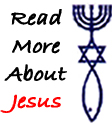






![]()
Fast of the 17th of Tammuz.
Sometimes referred to as "The Fast of the Fourth Month."
Its Hebrew name is Shiva Asar B'Tamuz.
"Fast of the fourth month" found in Zechariah 8:19.
Jer: 52:6-7.
Three weeks before the Fast of Tisha B'av is the Fast Day occurring on the 17th day of the month of Tammuz. This Tammuz fast commemorates the first breach in the walls of Jerusalem, before the First Temple was destroyed by the Babylonian army.
This holiday was probably at one time observed on the 9th day of Tammuz. Then changed to the 17th.
There are two common reasons accepted by scholars for the changing of the date. The first one is that daily temple sacrifices were stopped during the Roman takeover on the 17th of Tammuz.
The second reason has to do with the second temple. Its destruction is viewed by Judaism as a greater loss than the first temple's destruction.
Rather than have two separate dates to commemorate two separate temple destructions, all this disaster was combined together and the 17th of Tammuz was the day decided upon for fasting due to both temple's destruction.(1)
The three weeks between this fast day and the fast of Tisha B'Av is a period of time known as Sholshet HaShavuot. This 21-day period is considered by some to be a time of mourning and sadness. Sometimes this morning process is observed with the sunrise to sunset fast, and then gradually increases throughout the 21 day period with the most emphasis on the last nine days. It can end with a 25 hour fast on Tisha B'Av, the ninth day of the month of Av, the day the temples were actually destroyed. It is also known by the Hebrew term beyn hameitzarim meaning "between the straits" or "narrow places". This name is taken from the book of Lamentations 1:3. There is a Midrash (story) that concerns this 21-day period. It says that these 21 days are a period of time when the deadly pestilence (demons) prevail.(2) (5)
This fast day lasts from sunrise to sunset.(3)
Prayer should always be part of a Fast Day.
"Rav Saadia Gaon (10th Cent.) is quoted as the author of the statement that Daniel's three-week period of fasting and mourning (Dan 10:2) covered the three weeks between the 17th of Tammuz and the 9th of Av (Shvile Haleket 263)."
Tradition has downplayed celebrating things like weddings or other gatherings that were joyous.
Some observe the custom of not getting their hair cut or even shaving during this period.
This is one of four fast days established after the destruction of the First Temple. The four are found in the Talmudic passage Rosh Hashanah 18b. Along with the 17th (9th) of Tammuz are the 9th of Av, which was the burning of both temples; the third of Tishri, which was the assassination of Gegaliah and the 10th of Tevet, which is considered to be the beginning of the Babylonian siege of Jerusalem.
There is a passage in the Mishna that lists five historical events that happened on this day. The tablets of the law were broken when Moses threw them down because he was disgusted that Israel was worshiping the Golden Calf as an idol in his absence, the Korban Tamid (daily sacrifices) was suspended (in the Second Temple), the Torah scrolls were burned (in the Second Temple), a graven image was placed in the temple (in the First Temple by the evil King Manashe), and Jerusalem was captured (in the Second Temple Period Era) (Mishna Taanit 26a-b).(2) (4)
Our God who is a sovereign God allowed this destruction to happen for a reason. While it was nice to have a house of worship, (the temple), these physical structures may come and go. Today for believers in Yeshua (Jesus), our own body is the temple that God's Holy Spirit dwells in. All the believers collectively make up the house of worship, otherwise known as the body of Christ or the Church. It is possible that there will be another temple built to usher in the Messianic age. Daniel speaks about this temple being there when the final week of Daniel's 70 week prophecy occurs. This period of time is also known as the Time Of Jacobs Trouble and the Tribulation Period.
Whenever you fast, do not put on a gloomy face as the hypocrites do, for they neglect their appearance so that they will be noticed by men when they are fasting. Truly I say to you, they have their reward in full. But you, when you fast, anoint your head and wash your face so that your fasting will not be noticed by men, but by your Father who is in secret; and your Father who sees what is done in secret will reward you (Matthew 6:16-18).
During the First Temple Era, the priests were forced on this day - a year before the Temple's destruction - to stop offering the daily sacrifice due to a shortage of sheep.(5)
If you know of someone fasting on this day, one of the appropriate greetings would be "I hope you have an easy fast" (Tzome Khal). From another perspective, a new greeting, "I hope you don't have an easy fast" is emerging. The thinking behind this greeting is that the fast should not be easy but challenging, so that it can serve its purpose (of reminding us that we are dependant upon God) to the fullest.
For a related article to this holiday, please read Four Sign's Of The Coming Destruction Of The Temple.
For a list of future holidays dates check the Master Calendar Table.
Find out more about Fast Days observed in the Jewish Religion:
Why not try a light fast with a Jewish friend to prepare the way for the Tisha B'Av fast that is 21 days later. It may help open up a dialogue about the destruction of the Second Temple and atonement.
1). The Feast of Israel by Bruce Scott of Friends of Israel ministries.
2). Some information from this page came from The Biblical And Historical Background Of The Jewish Holy Days, by Abraham P. Bloch is copyrighted material and was used with permission of the publisher. KTAV Publishing, 900 Jefferson Street. box 6249, Hoboken, NJ 07030-0102
3). Messiah Magazine #91 First Fruits of Zion.
4). Jewish Art Calendar by Lubavitch Chabad of Peoria 5767-2006:.The Soncino Talmud Judaic Classic Library (Mas. Ta'anth 26a-b).
5). Arutz Sheva News 7/3/2007
